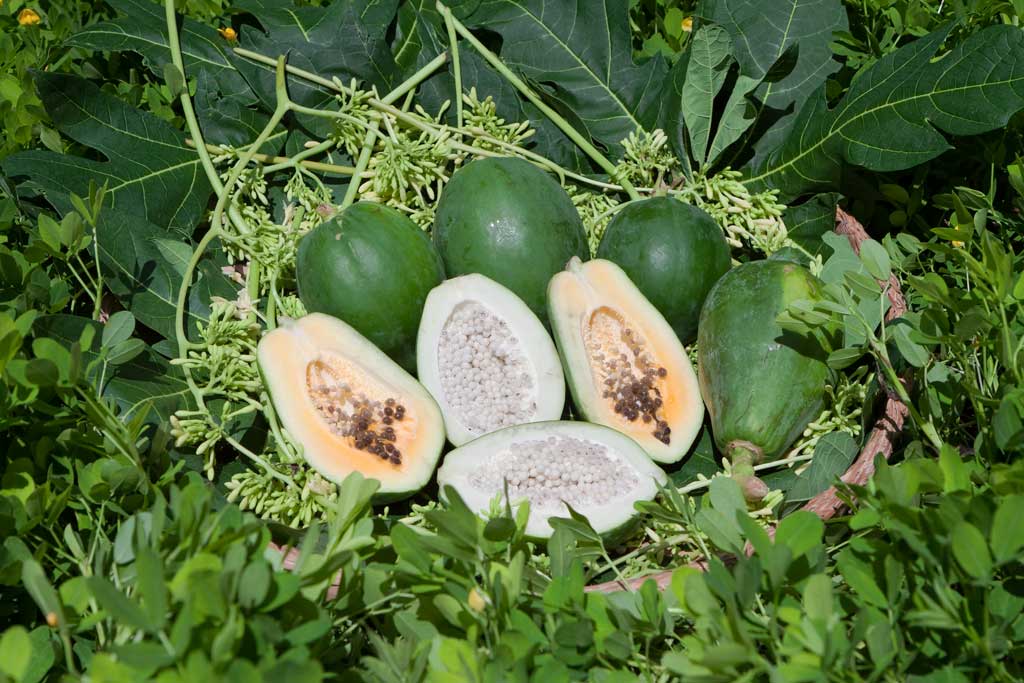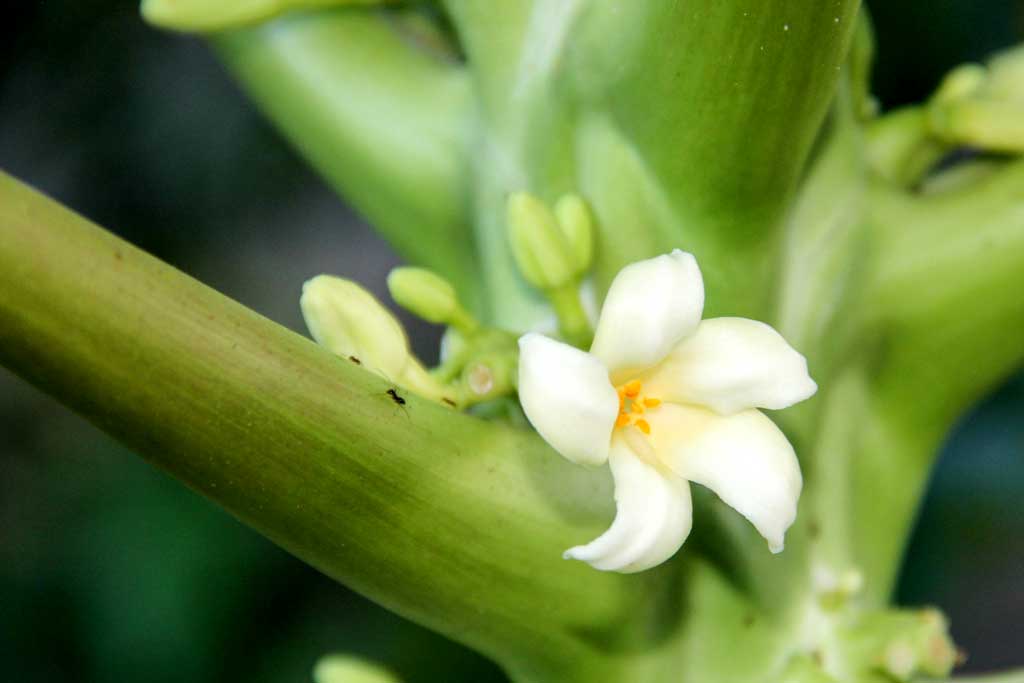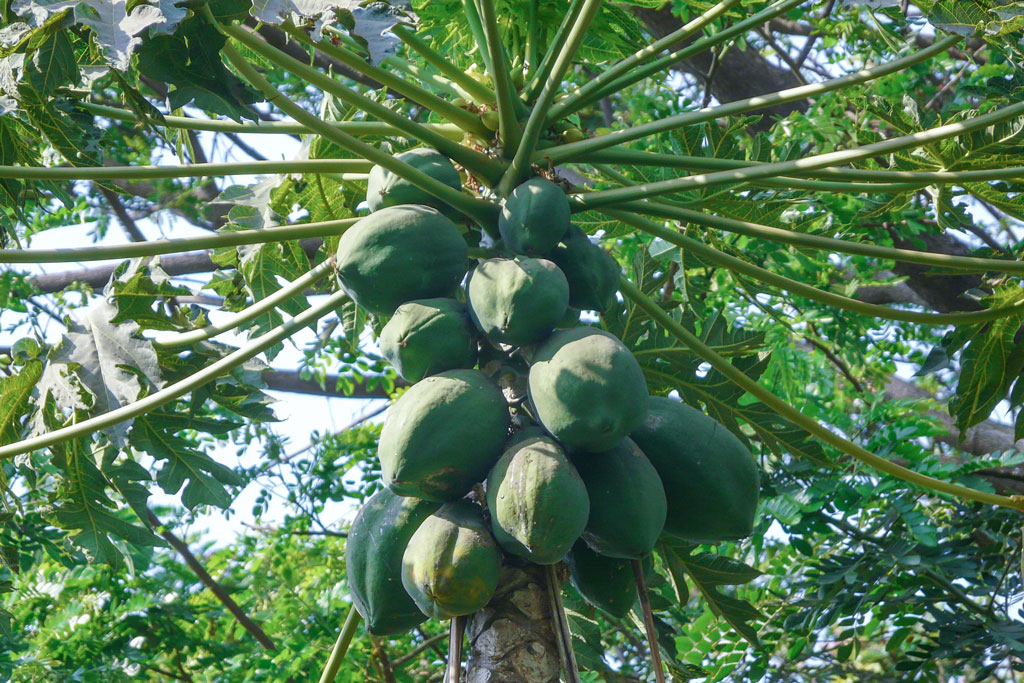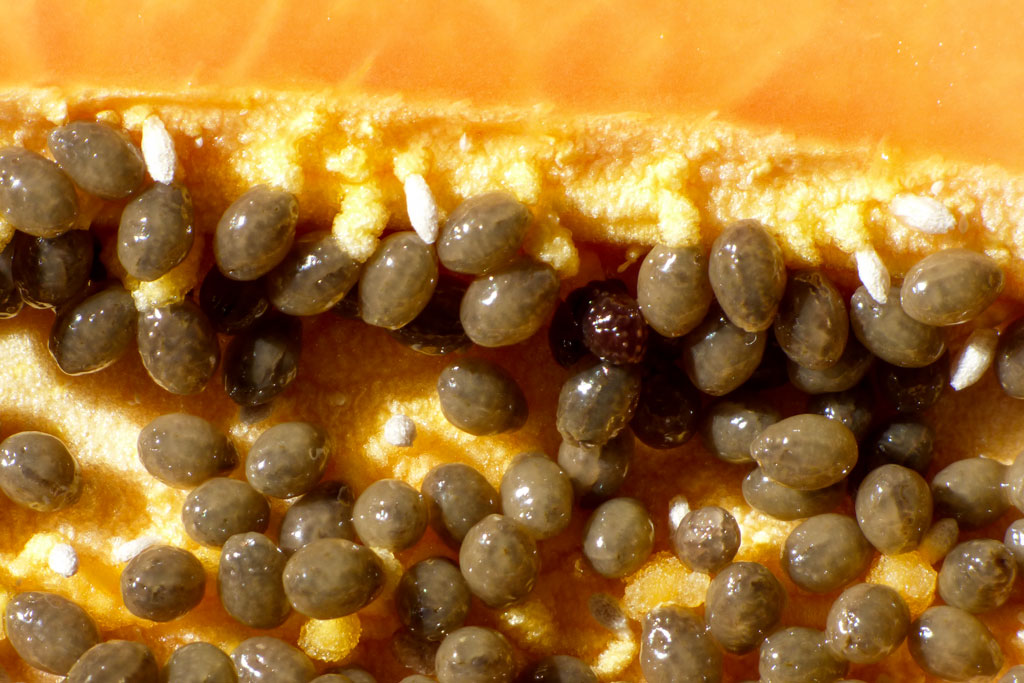Papaya
(Carica papaya)
Scientific Name: Carica papaya Linn.
Common Name(s): Papaya
Parts used: Bark, Flowers, Fruits, Leaves, Papain, and Seeds
Used in the treatment of:
- Bronchitis
- Cancer
- Cough
- Croup
- Cystitis (inflammation of the bladder; common type of urinary tract infection (UTI))
- Diarrhea
- Diphtheria
- Dyspepsia (indigestion)
- Enlarged spleen
- Epithelioma
- Hemorrhoids (Piles)
- Hepatomegaly (enlarged liver)
- Hoarseness
- Hypertension (high blood pressure)
- Laryngitis
- Rheumatism
- Stomach troubles
- Tracheitis
- Ulcers
- Yaws

Photograph licensed from Noel Singson

Photograph by Joan Simon, used and edited under a CC BY-SA 2.0 license | As edited, distributed under a CC BY-SA 4.0 license

Photograph by Dinesh Valke, used and edited under a CC BY-SA 2.0 license | As edited, distributed under a CC BY-SA 4.0 license

Other uses:
- Analgesic (relieves pain)
- Antifungal
- Antigenotoxic (prevents chemical agents from damaging the genetic information within cells causing mutations)
- Antihemolytic (prevents hemolysis or rupture / destruction of red blood cells)
- Anti-inflammatory
- Antimicrobial
- Antioxidant
- Antisickling agent
- Anti-ulcerogenic (prevents the onset of ulcers)
- Digestive
- Febrifuge (reduces fever)
- Hemostasis / haemostasis (causes bleeding to stop; keep blood within a damaged blood vessel; opposite of hemorrhage)
- Hepatoprotective / antihepatotoxicity (prevents damage to the liver)
- Immunomodulator
- Nephroprotective (prevents damage to the kidney)
- Poultice (relieves soreness and inflammation)
- Stomachic (promotes the appetite and / or assist digestion)
